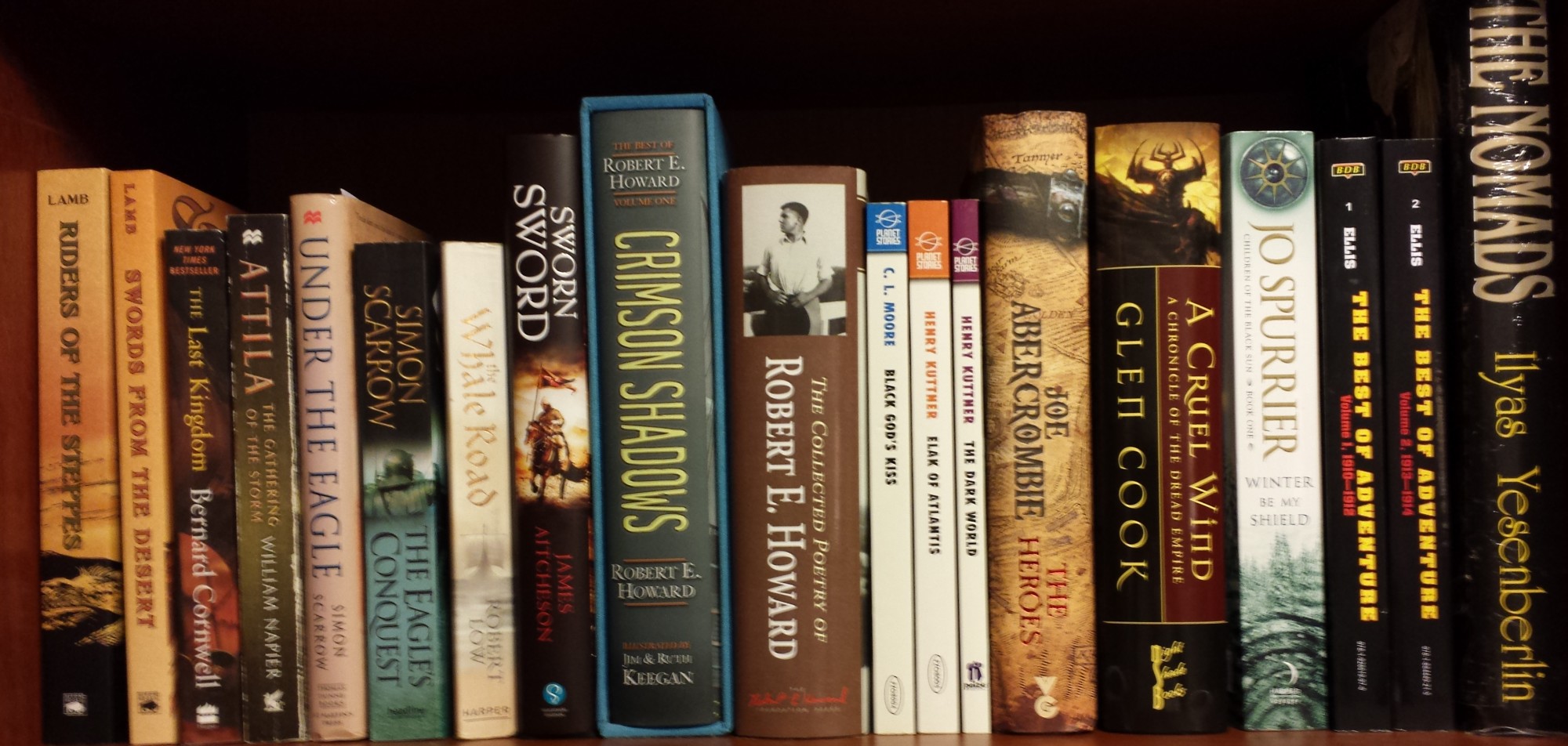We’ve got another guest post by John Bullard for you today:
 Robert E. Howard’s final Conan story, “Red Nails”, relates how Conan and his fellow adventurer Valeria come upon a giant, totally enclosed city, Xuchotl, where the inhabitants have divided up into two factions and are in a deadly war to wipe each other out. As is well known, Howard used a lot of real life historical incidents and places as inspiration to write many of his stories. Howard’s two trips to New Mexico in 1934 and 1935 with his good friend Truett Vinson provided ideas for his stories. Patrice Louinet, in his essay1 on Howard’s writing of the Conan tales argued that the feud of the inhabitants of Xuchotl was inspired by Howard’s June 1935 trip to New Mexico, when he and Truett Vinson stopped at the town of Lincoln, home of the famous Lincoln County War, to see the sites of the notorious conflict. Howard had a great interest in the Lincoln County War and its most famous fighter, Billy the Kid, and wrote of the events in many letters to H.P. Lovecraft and August Derleth. Howard also wrote a travelogue of the 1935 New Mexico trip in two letters to Lovecraft and Derleth. His letter to H.P. Lovecraft in July 1935 contains a long, extensive narrative of the trip, and that letter’s sections dealing with Howard’s experiences and impressions of Lincoln definitely show its influence on his conception of the deadly feud in Xuchotl as well as the atmosphere of the city itself.
Robert E. Howard’s final Conan story, “Red Nails”, relates how Conan and his fellow adventurer Valeria come upon a giant, totally enclosed city, Xuchotl, where the inhabitants have divided up into two factions and are in a deadly war to wipe each other out. As is well known, Howard used a lot of real life historical incidents and places as inspiration to write many of his stories. Howard’s two trips to New Mexico in 1934 and 1935 with his good friend Truett Vinson provided ideas for his stories. Patrice Louinet, in his essay1 on Howard’s writing of the Conan tales argued that the feud of the inhabitants of Xuchotl was inspired by Howard’s June 1935 trip to New Mexico, when he and Truett Vinson stopped at the town of Lincoln, home of the famous Lincoln County War, to see the sites of the notorious conflict. Howard had a great interest in the Lincoln County War and its most famous fighter, Billy the Kid, and wrote of the events in many letters to H.P. Lovecraft and August Derleth. Howard also wrote a travelogue of the 1935 New Mexico trip in two letters to Lovecraft and Derleth. His letter to H.P. Lovecraft in July 1935 contains a long, extensive narrative of the trip, and that letter’s sections dealing with Howard’s experiences and impressions of Lincoln definitely show its influence on his conception of the deadly feud in Xuchotl as well as the atmosphere of the city itself.
But, did Howard draw upon a place or places in the real world which inspired his creation of the physical description of Xuchotl itself? It is my belief that Howard did indeed draw upon real life places for creating Xuchotl, and that it was on this 1935 trip that he found that inspiration. These two letters reveal the clues as to what those places in New Mexico were, with two in particular probably being the real-life inspirations for the layout of the incredible city of Xuchotl.
The Letters
Howard traveled with Vinson to New Mexico in June, 1935, as Vinson wanted to visit people in Santa Fe. Along the way, the pair stopped to visit Lincoln to see the buildings where much of the action in the Lincoln County War took place. They then continued on to Santa Fe. Howard hoped to continue traveling on into Colorado and Arizona, but Vinson wanted to end the trip and return home to Texas quickly after they had reached Santa Fe. It was while they were in Santa Fe, that Howard writes in the two letters the clues of what led to his creating the physical layout of the doomed city of Xuchotl: Continue reading







